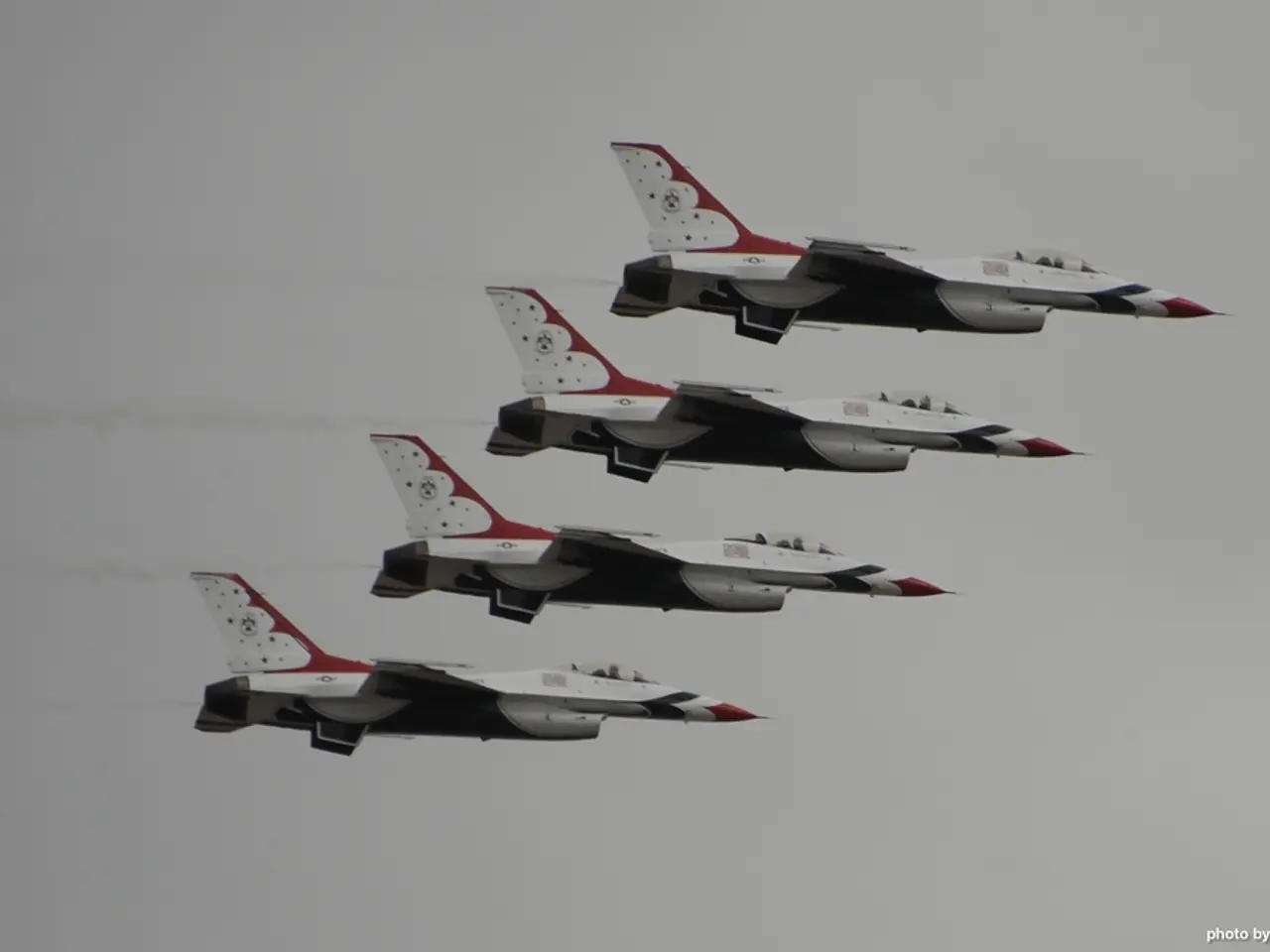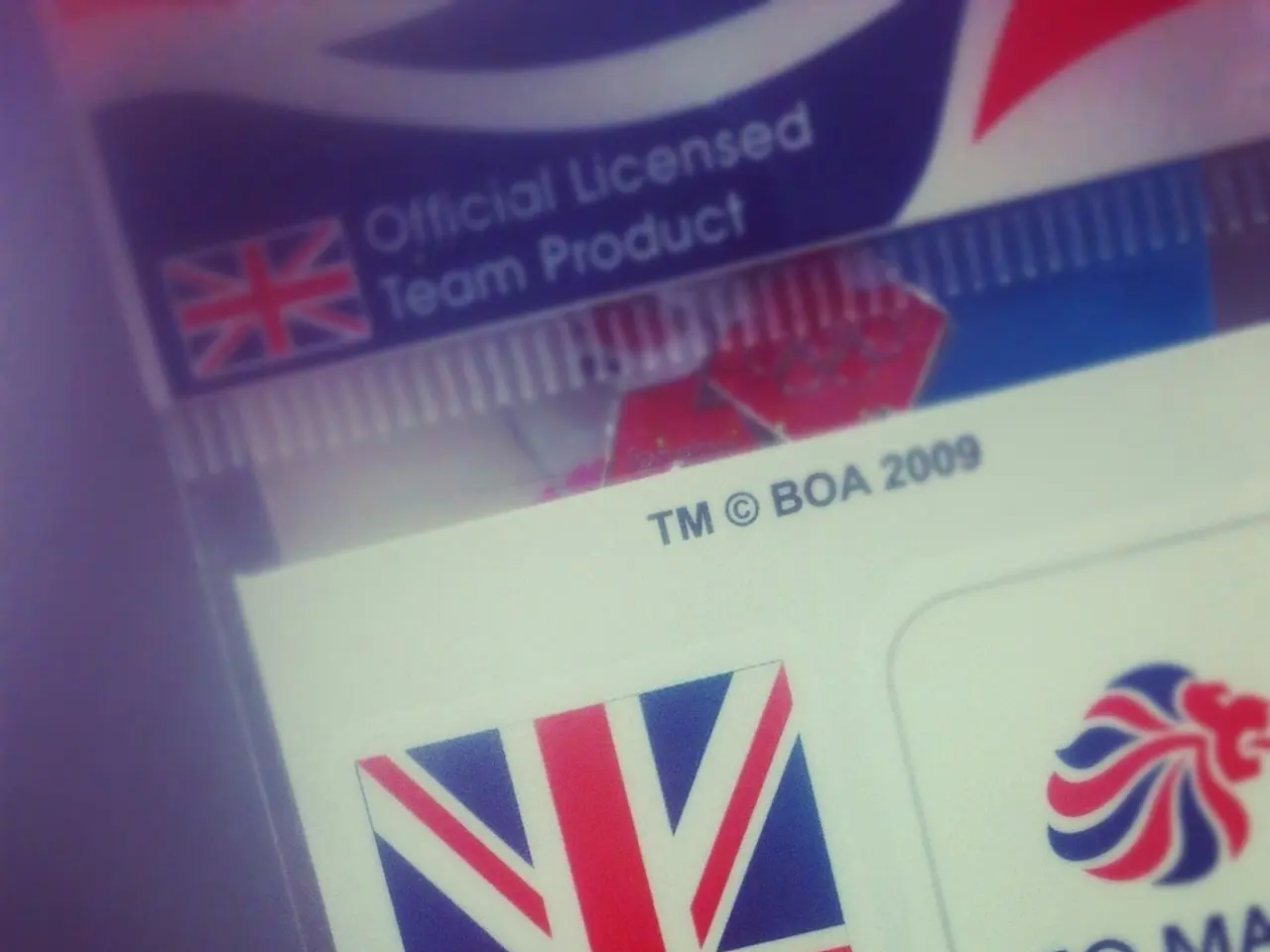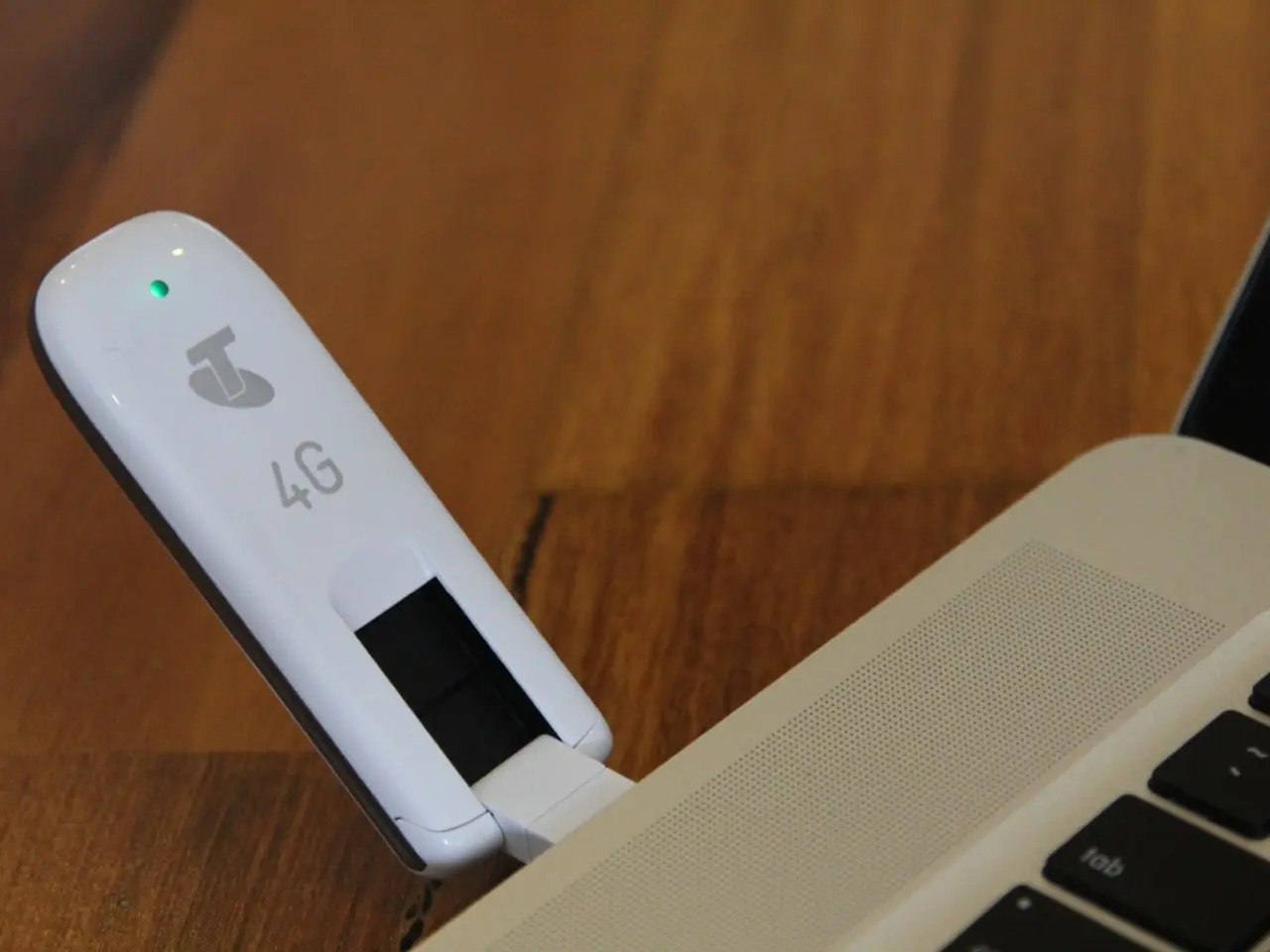Commercial prowess of SpaceX demonstrated through Falcon Heavy flight mission
The history of SpaceX's Falcon Heavy's triple rocket landing began on February 6, 2018, with the successful recovery of the two side boosters on Landing Zones 1 and 2 at Cape Canaveral Air Force Station. The central core attempted a landing on an off-shore drone ship but fell short, marking a historic first for SpaceX [2][4][1]. A second successful triple landing of all three boosters occurred on April 11, 2019 [2][4].
This achievement has had a significant impact on aerospace dynamics by proving the feasibility of reusable heavy-lift launch vehicles. The triple booster landing technique required precise control and coordination of 27 Merlin engines, split across three first stages, highlighting advances in propulsion, guidance, and descent dynamics. SpaceX’s success has fostered a shift towards reusability in aerospace, where cost-effective, rapid turnaround becomes standard, influencing industry design priorities and enabling more ambitious space missions [3][4].
The Falcon Heavy, with 5 million pounds of thrust, is currently the most powerful rocket. It uses two side boosters, each similar to a Falcon 9 first stage, plus a center core. Launches support simultaneous control of three boosters for vertical landing, a complex aerospace engineering feat [1][3]. The development of dedicated landing pads (Landing Zones 1 and 2 at Cape Canaveral) was crucial to enable safe recovery [1][3]. These advances build upon earlier Falcon 9 reusable first stage landings, first achieved in 2015 [1][5].
The primary mission of the Falcon Heavy flight was to put out a high-end communications satellite into earth's orbit for Arabsat, a Saudi-based consortium. The Arabsat 6A satellite, manufactured by Lockheed Martin, is intended for the Arabsat consortium in Saudi Arabia. Khalid Balkheyour, CEO of Arabsat, stated that the new satellite will strengthen their existing fleet and offer greater internet, television, and radio services [6]. The Arabsat 6A satellite's position is considered ideal for communications stations, offering television, radio, mobile, and broadband services across the Middle East, Europe, and Africa [7].
The launch of the Falcon Heavy took place from historic pad 39A at the Kennedy Space Center. Hundreds of tourists and area residents were attracted by the landing of both booster side-by-side at the nearby Cape Canaveral Air Force Station. The boosters completed seemingly synchronized touchdowns with dual sonic booms, making for a spectacular show [8]. SpaceX successfully launched the Falcon Heavy flight mission for an advanced communications satellite into orbit for Arabsat. The central core landed successfully on an off-shore drone ship named Of Course I Still Love You [1]. SpaceX has expressed pride in the successful completion of the Falcon Heavy mission [9].
Looking ahead, SpaceX's next launch from the Cape is currently scheduled for April 26, involving a Falcon 9 rocket and a Dragon cargo capsule to the International Space Station. The Falcon Heavy is expected to become a key part of SpaceX’s launch services with several ongoing projects [10]. The recovery of the rocket's three Falcon 9 core stages for refurbishment and re-use will likely change aerospace dynamics, further reducing launch costs and increasing mission frequency [11].
References:
- Space.com (2019). SpaceX's Falcon Heavy: A Complete Guide. [online] Available at: https://www.space.com/32993-spacex-falcon-heavy.html
- Space.com (2018). SpaceX's Falcon Heavy Launch: What You Need to Know. [online] Available at: https://www.space.com/37345-spacex-falcon-heavy-launch.html
- Space.com (2019). SpaceX's Falcon Heavy: How It Works. [online] Available at: https://www.space.com/32994-spacex-falcon-heavy-how-it-works.html
- Space.com (2019). SpaceX's Falcon Heavy Launches for the Second Time. [online] Available at: https://www.space.com/40708-spacex-falcon-heavy-launch-second-flight.html
- Space.com (2016). SpaceX's Falcon 9 Rocket Successfully Lands on Drone Ship. [online] Available at: https://www.space.com/33312-spacex-falcon-9-rocket-lands-drone-ship.html
- Space.com (2019). Arabsat 6A Satellite Launch: What You Need to Know. [online] Available at: https://www.space.com/40764-arabsat-6a-satellite-launch.html
- Space.com (2019). Arabsat 6A Satellite: What It Does and Why It Matters. [online] Available at: https://www.space.com/40765-arabsat-6a-satellite-what-it-does.html
- Space.com (2019). SpaceX's Falcon Heavy Launch: What You Need to Know. [online] Available at: https://www.space.com/40708-spacex-falcon-heavy-launch-second-flight.html
- Space.com (2019). SpaceX's Falcon Heavy Launch: What You Need to Know. [online] Available at: https://www.space.com/40708-spacex-falcon-heavy-launch-second-flight.html
- Space.com (2019). SpaceX's Next Launch: Falcon 9 for ISS Resupply. [online] Available at: https://www.space.com/40763-spacex-next-launch-falcon-9-iss-resupply.html
- Space.com (2019). SpaceX's Falcon Heavy: How It Works. [online] Available at: https://www.space.com/32994-spacex-falcon-heavy-how-it-works.html
- The triple booster landing technique employed by the Falcon Heavy showcases significant advancements in reusable heavy-lift launch vehicles, a crucial development in the field of space-and-astronomy that has been influenced by technology.
- The success of SpaceX's Falcon Heavy in recovering all three boosters has had a profound impact on the aerospace dynamics and industry design priorities, fostering a shift towards cost-effective, rapid turnaround and enabling more ambitious space missions, driven by science.




